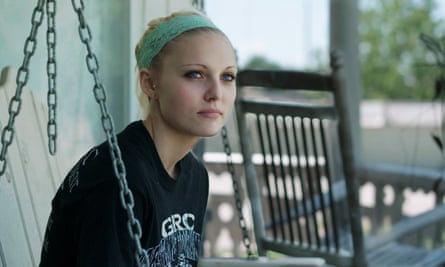A year after the documentary The Hunting Ground exposed a campus rape epidemic and systemic coverup efforts by some administrations, Audrie & Daisy debuts as an equally devastating film that shows how high school students are also at risk.
Bonni Cohen and Jon Shenk’s documentary is sure to provoke a national discussion (Netflix recently acquired it out of Sundance) – and scare viewers off from ever setting foot anywhere near the town of Maryville, Missouri.
The film-makers open Audrie & Daisy by recounting the horrific events that led to the suicide of 15-year-old Audrie Pott, in Saratoga, California, in 2012. At a Labor Day weekend party, an intoxicated Audrie passed out and was carried to an upstairs bedroom. A group of boys used a Sharpie to scrawl obscenities all over her naked body, and then sexually assaulted her. Audrie became the ridicule of her school when video of her assault was circulated around school. A week later, she hung herself in her bathroom at home.
The film then somewhat clumsily turns to high schooler Delaney Henderson, who was allegedly attacked the year before by boys she considered friends. Like Audrie, Delaney says she considered ending her life.
Delaney’s story is then sidelined to make way for Daisy Coleman, another alleged victim of sexual assault. There’s a relief that comes with seeing Daisy on camera to tell her own story; unlike Audrie, she’s still alive. But her story sadly does largely parallel Audrie’s: after drinking too much she ended up unconscious at a male friend’s house, where she was allegedly raped by a popular senior and friend of her older brother. Another boy filmed.

Her family’s town of Maryville, instead of condemning the boys’ alleged actions (one admits to the Nodaway County sheriff in a taped interview that he “had sex” with Daisy), turned on her and her family, accusing them of spreading lies. Daisy’s alleged assailants are initially let off, but once the rest of the country catches wind of the shocking outcome, national media descend upon the town. The neighbors then vilify Daisy and her family.
Her story is made all the more tragic when a few years later Daisy, having moved to escape death threats hurled at her and her family, is revealed to be a shell of her former bubbly self: fixated on her own mortality, she spends her spare time drawing morbid imagery and working as a tattoo artist.
To tell the stories of Audrie and Daisy, the film-makers make conventional use of talking heads. Although uncreative, it works: the parents and friends of both girls make for affecting subjects and speak from the heart.
Best of all, Audrie and Daisy also feature sheriff Darren White and Maryville’s mayor Jim Fall as key subjects – and remarkably, neither holds back from voicing sexist, deeply troubling remarks before the camera. “Girls have as much culpability” in cases like Daisy’s, says White at one point, looking smug.
Infuriating, heartbreaking and vital, Audrie & Daisy is required viewing.

Comments (…)
Sign in or create your Guardian account to join the discussion